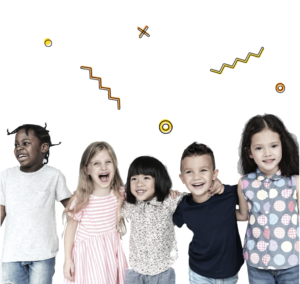February Research Spotlight: 3 Articles Examining Child Welfare + Diversity, Inclusion, & Belonging
By Allie Long
 The strength of youth voice: Exploring the influence of youth strength perspectives on desired outcomes for youth enrolled in system-of-care services (2019)
The strength of youth voice: Exploring the influence of youth strength perspectives on desired outcomes for youth enrolled in system-of-care services (2019)
E. Sacre Trawick, M. Aber, N. Allen & J. Fitts
In this study, researchers wanted to bring power back to youth. This was the first known study to ask youth being treated for chronic and severe mental health challenges to be the ones assessing their own emotional and behavioral strengths as a way to predict their emotional and behavior outcomes.
Forty-nine youth between ages 10-18 who had diagnosable serious emotional disturbances and risked out-of-home placement, together with their caregivers, were surveyed by community interviewers every six months for two years. Both caregivers and youth were asked to assess the youth’s strengths across delinquency, school attendance, school performance, coping skills, and involvement in prosocial activities.
Researchers found that the youth strength assessment data more accurately predicted changes in delinquency, school attendance, and activity involvement than did the caregiver data. In fact, the self-reported strengths from youth gave a more holistic glimpse into various factors impacting diversity of responses and outcomes.
Social work has consistently been a discipline that advocates for youth voice. However, this study is important because it examines the added value of youth AND caregiver perspectives when trying to understand outcomes for youth who may have odds stacked against them in some way. Limitations for this study include a small sample size of participants who were already actively seeking mental health treatment. Regardless of those drawbacks, this study serves as a crucial reminder of the necessity to elevate youth voice from a strengths-based perspective.
 In their own words: Overcoming barriers during the transition to adulthood for youth with disabilities who experienced foster care (2017)
In their own words: Overcoming barriers during the transition to adulthood for youth with disabilities who experienced foster care (2017)
R. M. Harwicka, L. Lindstromb & D. Unruh
Although at least 40-47% of all children in foster care have an identified disability, this is a population that is rarely studied within the foster care context. In addition to various negative outcome risks that can follow the abrupt transition out of care, barriers to success can be intensified for foster youth who also have an identified disability. This study was unique because it provided a direct platform for young adults with disabilities that experienced foster care (YADFC) to share a first-person account of what helped them transition to adulthood, and define what success has meant to them.
This was a qualitative study, with seven participants, ages 19-23. There were five women and two men, and the group’s length of time in foster care ranged from four to nineteen years. Each participant was interviewed twice for anywhere from 60-90 minutes per session.
When participants were asked what they associated with having a “successful” adulthood, the two consistent themes were stability and personal fulfillment. Almost all spoke about their future career and desired pay, in addition to wanting housing stability that would allow them to live independently. Participants shared that mental health needs and an understanding of their disabilities were the most significant barriers that they encountered. Finally, researchers observed that the three internal strengths that contributed to participants’ ability to overcoming barriers boiled down to resilience, advocacy, and self-determination.
Although this study had a small sample size with an unequal gender breakdown, this is an important in-depth look and firsthand account of the specific needs, goals, and strengths of foster youth who have an identified disability.
 Senses of belonging when living in foster care families: Insights from children’s video diaries (2019)
Senses of belonging when living in foster care families: Insights from children’s video diaries (2019)
T. Torbenfeldt Bengtsson & S. Tankred Luckow
Using video diary entries, this qualitative Danish study analyzed how foster children both consciously and subconsciously create a sense of belonging in their day to day home settings. In this study, “belonging” is defined as the “identification with one’s social, relational, and material surroundings, and a sense of being ‘at home’” (pg. 107). This case study took an intimate look into the firsthand perspectives that youth hold about navigating nuances between new and old family practices in order to feel a sense of belonging.
From a small sample size (n=2) researchers found that for a lot of kids, being “at home” means being where their parents live, but for children in foster care, the official regulation and control of their family dynamics creates a uniquely different family setting. This study showed how a sense of belonging for children in foster care is not just a personal or intimate feeling of being “at home,” but rather something conditioned by their social context. The video diaries highlighted nuanced expressions of family relationships that were made up of a combination of emotional, physical and functional attachments that these girls had to their foster and birth families.
